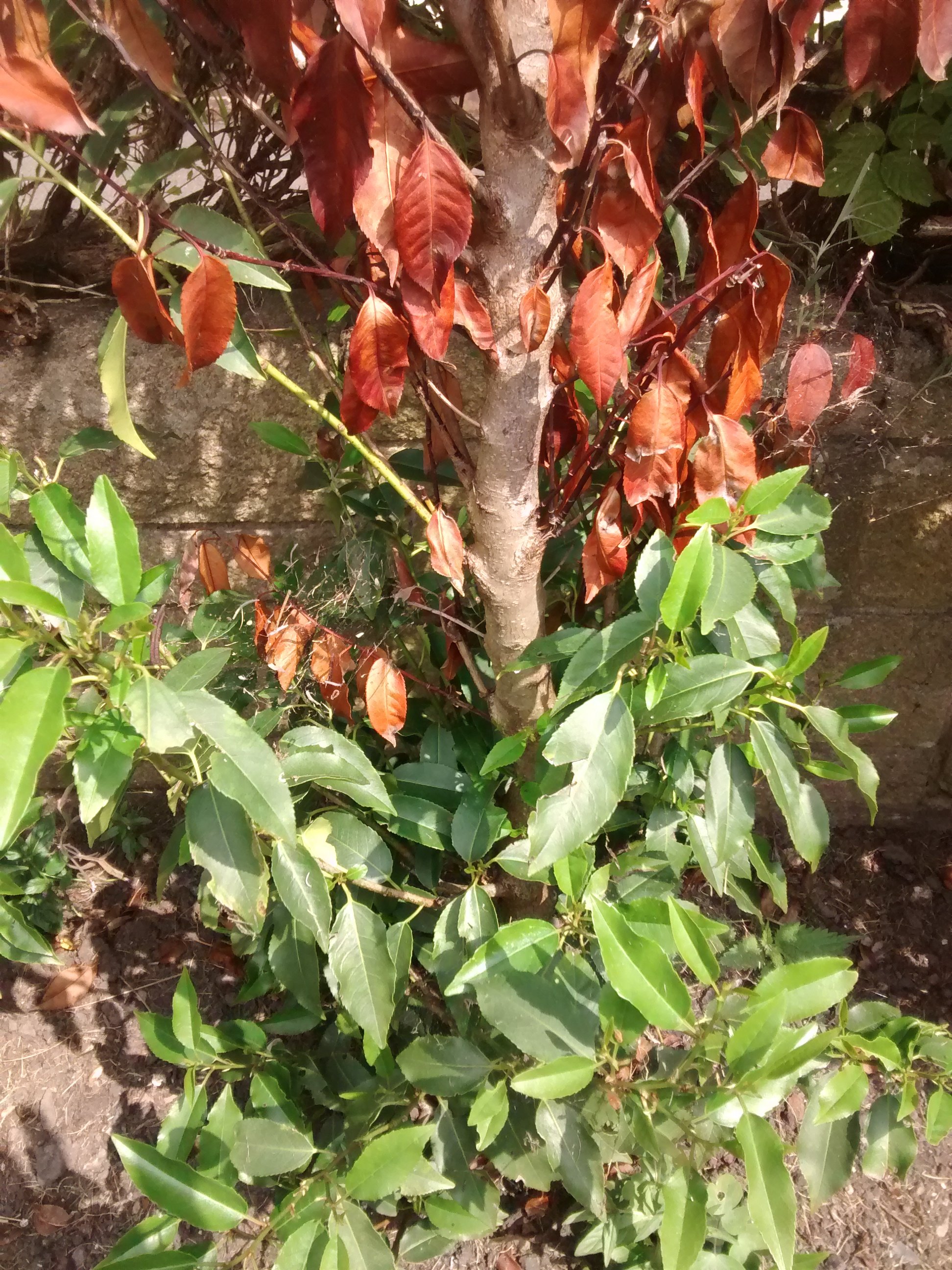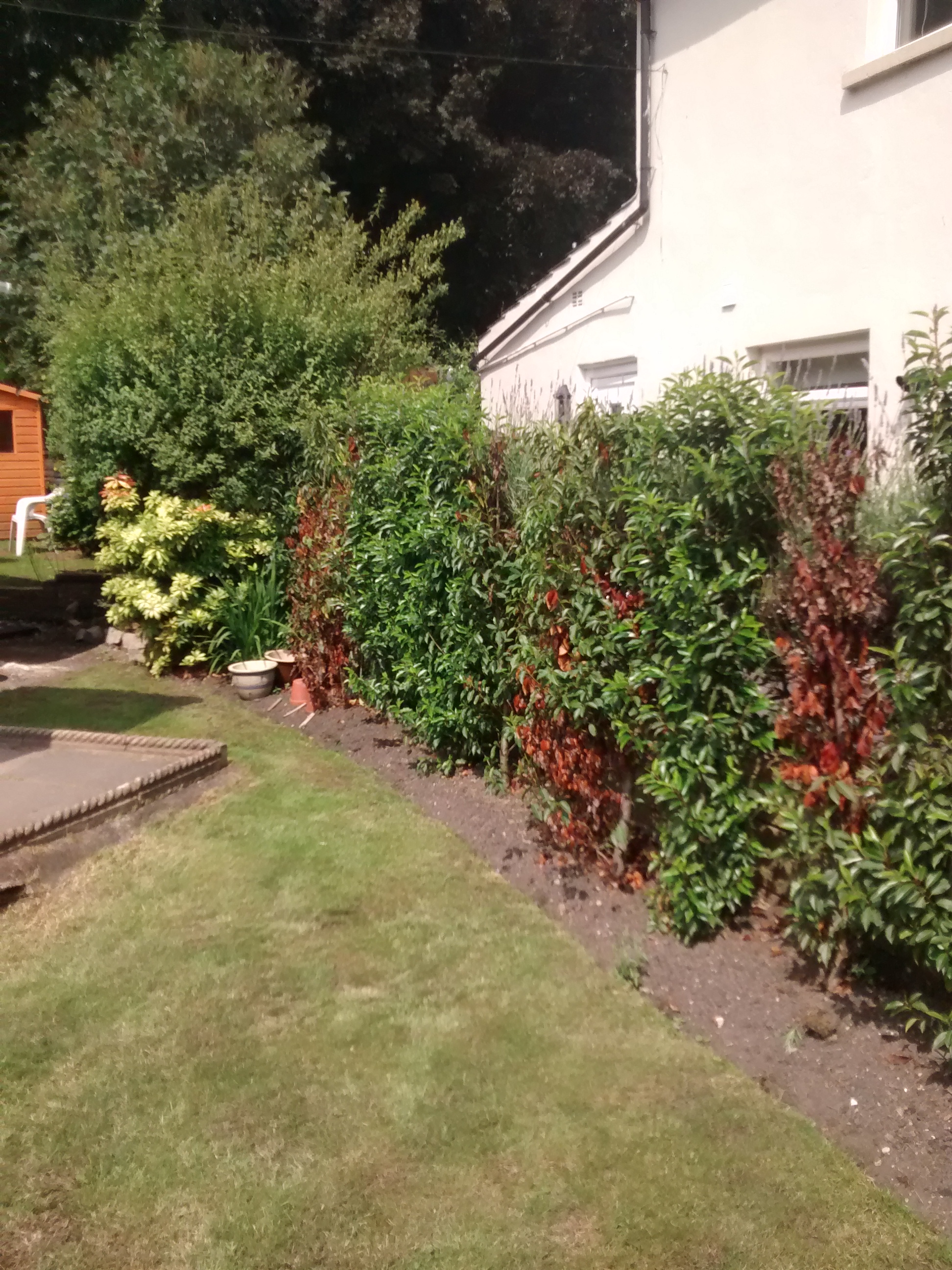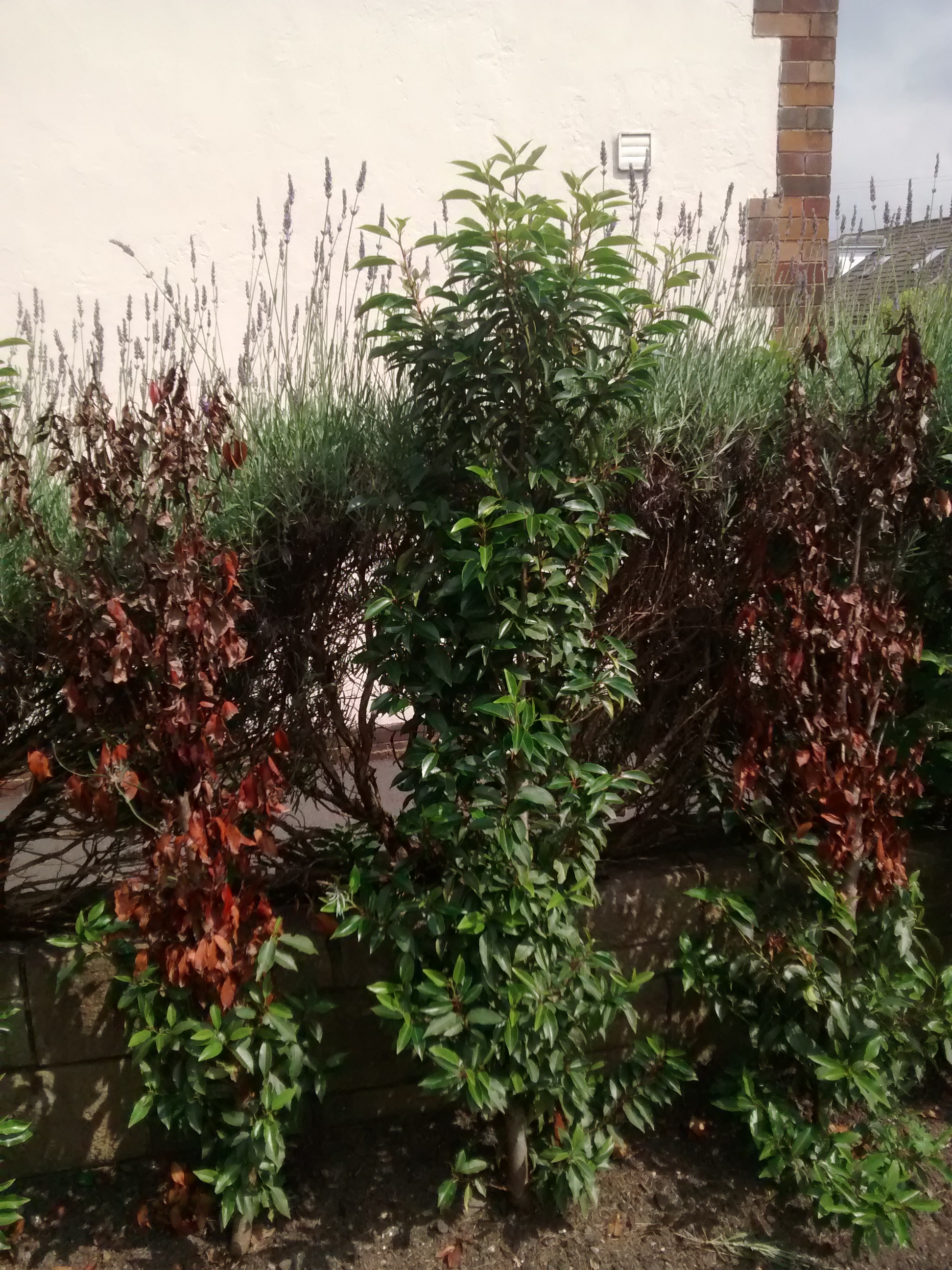Portugese Laurel
Hi
Can anyone help please?
Last October (2016) I Bought & Planted out a row of 16 x 1.2M Bare rooted Portuguese Laurels. The soil was very hard and gritty and looked quite poor so I removed as much as I could and incorporated a mixture of bags of topsoil and multi purpose compost with the rest. The shrubs were placed about 50cm apart as I wanted a dense hedge as quickly as possible. This was all in line with the "manufacturers instructions"
All seemed well at first but early in the new year I began to notice that the leaves on some of the shrubs were turning brown, As this got progressively worse over the following weeks I contacted the online nursery to see if they could help. They seemed stumped by the problem but did send me12 replacements FOC. which I optimistically replanted.
As you can see from the pictures my optimism was ill founded, the problem still persists and I am not sure if the really bad specimens in the row are even able to be saved, they look really sorry for themselves, however on a brighter (but very confusing) note several of their next door neighbours are thriving.
I have been told by someone that I should apply sequestered iron and also dig in bags of ericaceous compost to improve the soil but I am now very wary of doing the wrong thing.
Has anybody got any advice, Are they diseased or lacking in something, Can the plants be saved? even the bad ones have still some green leaves on them and some are even showing slight signs of new growth at the tips!
I do not profess to be a gardener and would greatly appreciate any help offered.
Many thanks. Stephen



Posts
The soil looks very dry ... how much water have they had? We had an unusually dry winter, spring and early summer.
I would be giving them at least 1 bucket of water per tree at least 2 - 3 times per week from early March onwards ... more in hot dry spells.
Gardening in Central Norfolk on improved gritty moraine over chalk ... free-draining.
I have been putting the hosepipe on them for a few minutes a couple of times a week, but I am always told by my wife that I over water things so maybe that is the problem!
The lady of the house is usually right (or so the man I live with tells me) but just occasionally there has to be an exception
Gardening in Central Norfolk on improved gritty moraine over chalk ... free-draining.
on the first pic the top looks dead but the base is alive. I'd cut the dead top off and give the live bits room to grow
In the sticks near Peterborough
Hi Nutcutlet
When you say cut the dead top off do you mean just the side shoots or the whole of the main stem
I would be unhappy cutting the whole thing back to say 60cm if there is a chance that new side shoots might eventually emerge, given that the healthy ones are now around 1.3 - 1,4 metres and I would like a dense screen as soon as possible.
Yes, cut those main stems back to live wood. Laurels grow rapidy when cut back hard. If you scrape some of the bark off of those main stems and find it is green underneath then there is a chance they are still alive. If brown or grey then they are dead and will never sprout sideshoots. I have one which regularly gets cut back hard and grows about a metre per year afterwards. Pruning promotes vigorous new growth; There's an old gardeners saying which goes "Growth follows the knife" and is never truer than when pruning back laurel.
The good one in the middle looks very tall and thin, if they were mine I'd cut them all down to the live bits, they will grow very quickly as Bob says.
I cant imagine what's doing that, can't be a water problem the others are ok. Trees at that size should have their roots well down and in the damp.
I only watered mine in at the time of planting, never watered Laurels at that height, they usually take care of themselves.
You don't have a lot of choice, not nice left like that and they won't green up again.
Hi
First of all many thanks to all of you who have replied, It is much appreciated.
Thanks Bob, I'll get scraping!
You are right Lyn, It looks like drastic action is needed with the secateurs!
Someone I talked to suggested that the soil should be improved by digging in ericaceous compost and feeding with sequested iron but i don't know whether to trust this advice.
To be fair the soil does look very poor, very ashy. We did remove some of it when we planted and replaced it with a mixture of multi purpose compost and topsoil. we also incorporated blood fish and bone, and I have since top dressed them with this again (about 6 weeks ago).
Any further thoughts on this please.
Steve
They don't particularly need acid soil, they'll grow just as well in alkaline soil. If you make compost, you can pile that on.
Ive never fed them, if they are sickly the worst thing to do is feed.